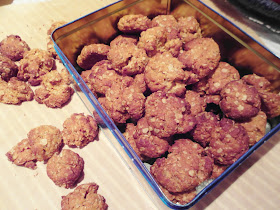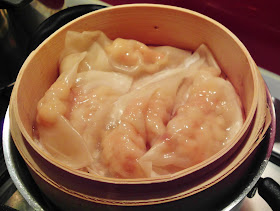Ok, it's Christmas. So here are the start of the festive recipes.
Rum balls have a great tradition in our family. There was always a big bowl of them on every Christmas morning breakfast table or at Christmas parties during December. I really love them, especially the condensed milk, which I have a slight addiction to. I am rather proud to say that I've passed the addiction onto my kids!
 We have always made run balls with crushed Weetbix being the main ingredient. I now see rum ball recipes made with crumbled Christmas cake or chocolate cake. Sorry folks, but it's not the same. Weetbix versions are way better in my opinion.
We have always made run balls with crushed Weetbix being the main ingredient. I now see rum ball recipes made with crumbled Christmas cake or chocolate cake. Sorry folks, but it's not the same. Weetbix versions are way better in my opinion.
You can make rum-free versions for the little ones if you like, but I feel that there is such a small amount of alcohol in each rum ball that it is really not necessary. And the rum flavour is really what makes these special. But it is up to you.
I like to make several batches of rum balls and then package them up in glass jars to give as gifts. Best to get them all out of the house otherwise they all get eaten up!
Merry Christmas.
What you'll need
Makes 20 - 30 small rum balls
9 Weetbix, finely crushed
1/2 cup desiccated coconut, plus 1 cup extra coconut to roll at the end
1 cup sultanas, roughly chopped
2 heaped tablespoons cocoa powder
395g tin Nestle condensed milk
1 tablespoon rum
What to do
Make a well in the centre of the ingredients and pour in the condensed milk, making sure to scrape out the tin and not waste any. pour in the rum.
Mix very well with a wooden spoon. You should have a sticky mixture that comes together when pressed.
Take heaped teaspoon-sized balls of mixture. Using damp clean hands, roll the mixture into balls. Set aside on a tray.
Place the extra reserved coconut into a large plastic container. Place a few rum balls at a time into the container and roll them around to coat well in coconut. Repeat until all rum balls are coated.
Store in air-tight containers or in jars decorated with Christmas paper.
Enjoy in moderation. These are addictive.



















































